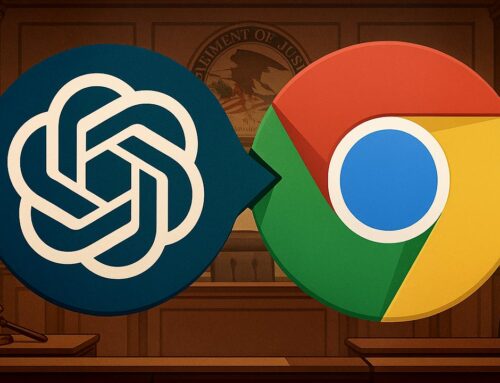What Are AI Writing Styles?
Imagine walking into a grand library that stretches as far as the eye can see, filled with volumes of every genre, tone, and technique imaginable. This library, however, is not limited by paper or ink but is instead powered by artificial intelligence, capable of writing in any style you can think of—and some you might not have even considered. From formal reports and whimsical tales to sharp marketing copy and philosophical musings, AI writing styles encompass the vastness of human communication, packaged into finely tuned algorithms that can switch voices like a chameleon blends into its surroundings.
At its core, AI writing styles refer to the various ways an AI can shape and deliver information based on tone, purpose, and audience. Think of it as a multi-talented writer who can effortlessly adapt their voice depending on what’s needed. One moment, the AI could be crafting a lighthearted blog post on travel destinations, filled with casual language and playful anecdotes. In the next, it might shift gears into a formal, academic tone, dissecting a complex subject like quantum mechanics with precision and authority.
This ability to switch between styles isn’t just about changing the words—it’s about understanding context, audience, and intent. AI doesn’t just mimic what it’s seen; it learns and adapts. For instance, when generating a persuasive sales pitch, the AI might focus on emotionally charged language, using phrases like “transform your experience” or “unlock your potential.” On the other hand, when writing a technical manual, it trades the emotional appeal for clarity and precision, offering step-by-step instructions in a straightforward manner.
AI writing styles are flexible, responsive, and highly varied. Imagine you need to write a gripping thriller plot. AI can help weave a suspenseful narrative, creating characters with backstories, motivations, and conflicts. The dialogue can snap with tension, the pacing can build suspense, and the plot twists can leave readers on edge—all by employing creative techniques that a human writer might use. Alternatively, in business settings, AI can write concise, well-structured reports or craft compelling, data-driven presentations.
The fascinating part of AI writing styles is how it can seamlessly switch between very different forms. Picture yourself needing both an empathetic email response to a customer complaint and a punchy, action-driven slogan for a new product. The AI can easily tackle both, adopting a compassionate tone in the email while delivering catchy, memorable lines for the slogan. This versatility is part of what makes AI such an extraordinary tool for content creation across industries, from advertising and education to journalism and entertainment.
However, AI writing isn’t limited to the written word. It can shape voiceovers for commercials, scripts for videos, or dialogue in interactive storytelling formats. It might be writing for a chatbot, where the goal is to engage users with friendly, conversational responses. Or, it could be used in a government policy paper, where the tone needs to be formal, diplomatic, and precise.
In short, AI writing styles are the vast toolkit that allows machines to communicate in a way that matches the intent, tone, and needs of any given context. Like an orchestra conductor guiding different sections to create harmonious melodies, AI directs its writing capabilities toward different outcomes. Whether it’s for fun, persuasion, instruction, or storytelling, AI’s adaptable writing styles continue to expand the possibilities of what we can achieve through language, ushering in a future where creativity and communication are enhanced by intelligent, responsive systems.
Master the Art of AI with 75 Dynamic Writing Styles for ChatGPT Prompts
Straight from ChatGPT.
- Formal Writing – Polished, professional tone; often used for academic papers, business reports, or official communications.
- Conversational – Casual, friendly tone; similar to how one might talk with a friend or in blog posts.
- Persuasive – Designed to convince the reader of an idea or viewpoint; often used in marketing and opinion pieces.
- Descriptive – Focuses on creating vivid imagery through rich, detailed descriptions.
- Narrative – Tells a story or relates events in a sequential manner, often with a plot and characters.
- Expository – Informative, clear, and factual; explains concepts or ideas without personal opinions.
- Technical – Precise and specific, often used for manuals, instructions, and highly detailed content related to technology or science.
- SEO Writing – Tailored for search engines, with keyword optimization, headings, and structure aimed at increasing web visibility.
- Creative Writing – Free-flowing, artistic, and imaginative, often used in fiction, poetry, and storytelling.
- Journalistic – Concise, objective, and factual, typically used in news articles and reports.
- Analytical – Breaks down a topic into its components to explore deeper meanings and implications; common in essays and critical reviews.
- Reflective – Personal and introspective, exploring thoughts and feelings on a particular subject or experience.
- Satirical – Uses humor, irony, and exaggeration to criticize or mock subjects.
- Copywriting – Promotional and persuasive, aimed at encouraging the reader to take action, such as in advertising or product descriptions.
- Report Writing – Structured, factual, and objective, often with data and analysis, used in business or research reports.
- Poetic – Rich in figurative language, rhythm, and meter, often using metaphors, similes, and other literary devices.
- Instructional – Step-by-step and directive, often used in tutorials, guides, and “how-to” content.
- Humorous – Light, witty, and entertaining, often used to make the reader laugh or smile.
- Argumentative – Presents evidence and reasoning to support a specific stance on a controversial issue.
- Autobiographical – Personal storytelling, recounting real-life experiences in a reflective or narrative form.
- Imaginative Fantasy – Fictional and creative, often building detailed imaginary worlds or alternate realities.
- Speech Writing – Focused on oral presentation, with emphasis on rhetoric, rhythm, and engaging the listener.
- Interview Style – Presented in a Q&A format, often used in profiles or feature stories.
- User-Centric Writing – Highly focused on addressing the needs, questions, or pain points of the audience.
- Grant Writing – Highly formalized, structured writing aimed at securing funding, with a focus on detailed project outlines and justifications.
- Empathetic Writing – Focused on understanding the reader’s emotions and needs, often used in support materials, healthcare, and wellness content.
- Case Study Writing – In-depth, analytical, and detailed, often used in business or academic contexts to explore real-world applications of theories or products.
- White Paper – Formal, authoritative reports that explore complex issues in depth, often used in business, policy, and technology industries.
- Legal Writing – Precise, technical, and based on strict structure and terminology, used in contracts, briefs, and legal documents.
- Brochure/Marketing Collateral – Concise, persuasive, and visually appealing content designed to engage potential customers.
- Email Marketing – Short, punchy, and targeted, often designed to convert through CTAs (Calls to Action) or nurture leads.
- Case for Support (Fundraising) – Persuasive and emotional, often used in nonprofit and charity sectors to make a case for donations or support.
- Press Release – Concise and newsworthy writing used to announce events, products, or services to media outlets.
- Product Descriptions – Informative yet persuasive writing used in e-commerce to highlight the features and benefits of a product.
- Slogan/Tagline Writing – Short, impactful, and catchy phrases used for branding and marketing.
- Abstract Writing – Concise summaries that capture the essence of academic papers, research studies, or reports.
- Editorial Writing – Opinionated, often used in newspapers and magazines to express the writer’s viewpoint on current events or issues.
- Personal Essay – Informal, often introspective, writing that explores personal experiences or opinions.
- Memoir Writing – Personal stories or life experiences, more detailed and reflective than autobiographical writing.
- Crisis Communication Writing – Clear, direct, and composed language used in urgent situations to inform or reassure stakeholders.
- Scriptwriting – Dialogue-heavy writing for film, television, radio, or video content, often with specific formatting.
- Brand Voice – Tailored to reflect the unique tone, style, and values of a specific brand in all communications.
- Social Media Writing – Short-form, engaging, and often conversational content designed for platforms like Twitter, Instagram, or LinkedIn.
- Transcription – Direct, verbatim conversion of audio or video speech into text, often used for interviews or legal proceedings.
- Academic Writing – Formal, structured, and focused on evidence-based arguments; common in research papers, theses, and dissertations.
- SEO Optimized Long-Form – Extensive, research-based articles that dive deep into a topic while strategically using keywords to drive traffic.
- Personalized Messaging – Tailored content for one-on-one communication, often used in customer support, emails, or direct marketing.
- Tutorial/How-To Writing – Step-by-step instructional guides that help the reader achieve a specific outcome.
- User Manual Writing – Highly structured, often technical, used to explain the use and maintenance of a product or system.
- Infographic Content – Short, concise text meant to accompany visual data or designs for easy consumption of complex information.
- Proposal Writing – Structured and formal, often used in business or project settings to propose ideas, solutions, or partnerships.
- Landing Page Copy – Short, impactful, and action-oriented, designed to convert website visitors into customers or leads.
- Vision/Mission Statement – Concise and inspirational, used to define a company’s or organization’s purpose and long-term goals.
- Apology or Public Statement – Sincere, thoughtful, and often formal, addressing mistakes or issues to a public or internal audience.
- Sales Letter – Persuasive, direct, and often emotional writing aimed at encouraging sales or client engagement.
- Testimonial/Review Writing – Positive, credible accounts that promote products, services, or experiences from a customer’s perspective.
- Parody Writing – Humorous imitation of a specific genre, style, or subject for entertainment or critique.
- Crowdfunding Content – Engaging and emotional writing aimed at inspiring people to contribute to a fundraising campaign.
- Speech Transcription – Accurate, detailed conversion of spoken presentations or dialogues into written form.
- Website Content – Strategic and engaging writing that is tailored for online readers and optimized for user experience.
- Cultural/Localized Writing – Writing adapted to the cultural, linguistic, or regional specifics of a target audience.
- Anthropological Writing – Academic, exploratory, and often descriptive, used in ethnographic studies or social analysis.
- Medical Writing – Specialized, fact-based writing, often used in healthcare industries, covering medical research, case reports, or drug information.
- Grant Proposal Writing – Formal, persuasive writing aimed at securing funding for projects, typically involving detailed budgets and project outlines.
- Scientific Writing – Clear, precise, and evidence-based writing for scientific research papers, journals, and reports.
- Literary Criticism – Analytical, evaluative writing that critiques and interprets literary works.
- Content Curation – Selective aggregation and commentary on existing content for blogs, websites, or newsletters.
- Annotated Bibliography – A combination of citation and short summaries or evaluations for academic or research purposes.
- Ghostwriting – Writing content for someone else to publish under their name, often in the form of books, articles, or speeches.
- Resume/CV Writing – Structured, concise writing that highlights professional experiences, skills, and achievements.
- Cover Letter Writing – Personalized and persuasive letters that introduce a candidate and their qualifications to a potential employer.
- Thought Leadership – In-depth, authoritative content that positions the writer or their organization as an expert in a particular field.
- Customer Feedback Response – Empathetic and professional responses to customer reviews or complaints, often used in customer service.
- Explainer Content – Simplified, engaging explanations of complex topics, often used in educational or tech sectors.
- Comparative Analysis – Detailed, objective comparison of two or more subjects, often used in reviews or business strategy.









Leave A Comment